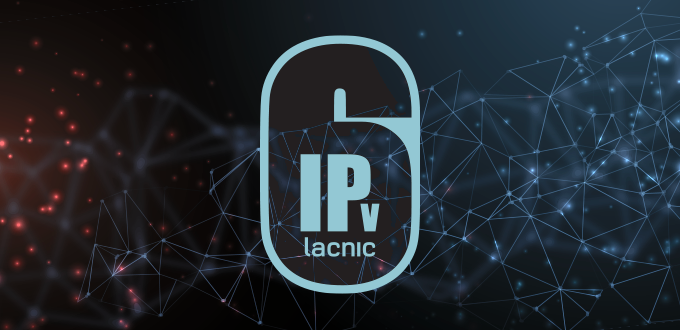IPv6-Only, the New Internet Scenario
19/09/2023

By Carlos Martínez, LACNIC CTO
The LACNIC region ran out of IPv4 addresses in 2020 when LACNIC assigned the last available IPv4 address block. From that moment on, only IPv6 space is available to support the future of the Internet in Latin America and the Caribbean.
Different alternatives. New LACNIC members can obtain IPv6 space immediately, but their options for obtaining IPv4 space are limited. They may either decide to join LACNIC’s waiting list (for members joining the list today, the estimated waiting time is currently 7 years) or participate in IPv4 address transfers, two options that will not be sustainable in the long term. LACNIC members who have already received IPv4 assignments may only receive IPv6 space directly from LACNIC or try to receive a transfer.
As for IPv6 deployment, notable progress is being made and global average IPv6 adoption stands at 40%. Based on the numbers corresponding to August 2023, in the region of Latin America and the Caribbean the country with the highest IPv6 adoption rate is Uruguay (56%), followed by Mexico (45%), Brazil (43.8%), Panama (30%), and Peru (25.5%).
IPv6 Only Networks
It is true that providing Internet service still requires a minimum of IPv4 addresses. But what seems to be the best way to efficiently use the small amount of available IPv4 space? To provide a good service in IPv6 and take advantage of the few available IPv4 addresses, the best solution would be what we call IPv6-only networks.
By IPv6-only networks we mean networks where IPv4 is used at the network edge. In addition, users have access to both IPv4 and IPv6, as the network (the thing that connects clients to the Internet) is IPv6-only and has IPv4 service.
And how is the IPv4 service provided to customers? Well, by using different technologies that operate at the network edge. IPv4 reaches the network edge, but it does not reach the end-user because mechanisms are applied that allow IPv4 content to be transported over IPv6 packets. We at LACNIC are promoting the use of these technologies and have prepared tutorials, guides, and information that are available to our entire community.
In the case of access networks, end-users connect to the Internet over IPv6 but can access IPv4 content. In the case of datacenter networks, in addition to NAT 64, proxies and load balancers are used that have features that allow them to receive requests over IPv4 and distribute the IPv6 load among several servers. These and other topics will be discussed in the preparatory webinars on IPv6-Only Networks we will hold prior to the tutorial “Building an IPv6-Only Network” scheduled for LACNIC 40 LACNOG 2023.
What are the advantages? With carrier grade NAT, an ISP must still manage an IPv4 network and an IPv6 network. Implementing IPv6-only networks simplifies our entire network. Basically, the operator forgets about IPv4 internally and takes the complexity to the ends (i.e., to the devices in the user’s home and at the edge of the network).
LACNIC has been working on IPv6-only networks for some time and we are now focusing on various training activities prior to the LACNIC 40- LACNOG 2023 event, where we will have an exclusive tutorial on this topic titled “Moving into the Future – Building an IPv6-Only Network.”
Being open to innovation and IPv6-only networks is one way to promote the use of IPv6-only networks and expand the use of the Internet.
We invite you to visit the “IPv6-Only” section of our website, where you will find all the information related to this topic.